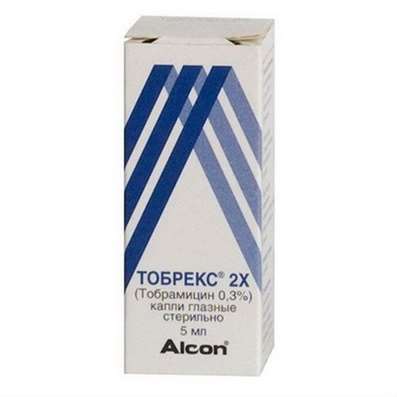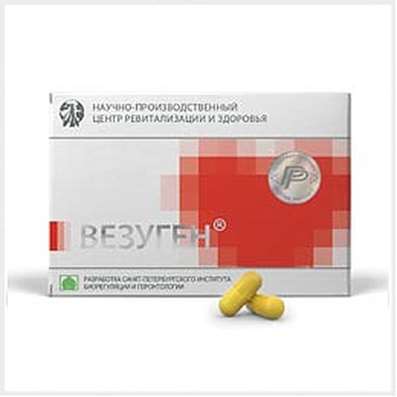Instruction for use: Fluoxetine-Apo
I want this, give me price
Dosage form: capsules
Active substance: Fluoxetine*
ATX
N06AB03 Fluoxetin
Pharmacological groups:
Antidepressant
The nosological classification (ICD-10)
F32 Depressive episode: Adynamic subdepression; Astheno-adynamic subdepressive states; Asthenoadressive disorder; Astheno-depressive disorder; Asthenodepressive state; Astheno-depressive state; Major Depressive Disorder; Vyaloapatichesky depression with retardation; Double Depression; Depressive pseudodement; Depressive illness; Depressive mood disorder; Depressive disorder; Depressive mood disorder; Depressive state; Depressive disorders; Depressive syndrome; Depressive syndrome larviated; Depressive syndrome in psychoses; Depressed masks; Depression; Depression Depletion; Depression with the phenomena of inhibition within the framework of cyclothymia; Depression is smiling; Involutional depression; Involutionary melancholy; Involutional depression; Manic-depressive disorder; Masked Depression; Melancholic Attack; Neurotic depression; Neurotic depression; Shallow Depression; Organic depression; Organic depressive syndrome; Simple depression; Simple melancholic syndrome; Psychogenic depression; Reactive depression; Reactive depression with moderate psychopathological symptoms; Reactive depressive states; Reactive depression; Recurrent depression; Seasonal depressive syndrome; Severostatic depression; Senile Depression; Symptomatic Depression; Somatogenic depression; Cyclotymic depression; Exogenous depression; Endogenous depression; Endogenous Depressive Conditions; Endogenous Depression; Endogenous depressive syndrome
F33 Recurrent depressive disorder: Major depressive disorder; Secondary depression; Double Depression; Depressive pseudodement; Depressive mood disorder; Depressive disorder; Depressive mood disorder; Depressive state; Depressive syndrome; Depressed masks; Depression; Depression is smiling; Involutional depression; Involutional depression; Masked Depression; Melancholic Attack; Reactive depression; Reactive depression with moderate psychopathological symptoms; Reactive depressive states; Exogenous depression; Endogenous depression; Endogenous Depressive Conditions; Endogenous Depression; Endogenous depressive syndrome
F42 Obsessive-compulsive disorder: Obsessive-compulsive syndrome; Obsessive compulsive states; Obsessive-compulsive syndrome; The Obsession Syndrome; The obsession neurosis; Obsessive-compulsive neurosis; Obsessions
F50.2 Nervous Bulimia: Bulimic Neurosis; Bulimia; Wolf hunger; Kinorexia
Composition and release form
Capsules 1 caps.
fluoxetine hydrochloride 22.4 mg
(corresponding to 20 mg of fluoxetine)
auxiliary substances: lactose monohydrate; wheat starch; stearic acid
capsule shell: gelatin
dyes used in a hard gelatin capsule: quinoline yellow; sunset yellow; titanium dioxide; brilliant blue
dyes, which are part of black ink: indigotine; the pace is red; brilliant blue; quinoline yellow
in polyethylene bottles at 14, 20, 28, 30, 50, 100, 200 and 500 pcs. or in contour cells 7 and 10; in a pack of cardboard 1, 2, 4, 5 and 10 packages.
Description of dosage form
Hard gelatin capsules with an opaque body of yellow-white color, an opaque green cap and an inscription in black ink "APO 20", filled with white or almost white powder. The size of capsule number 3.
Characteristic
Antidepressant group SSRIs.
Pharmachologic effect
Pharmacological action - antidepressant.
Has a timoanaleptic and stimulating effect. Selectively blocks the reuptake of serotonin (5-HT) in the synapses of neurons of the central nervous system.
Pharmacodynamics
Inhibition of reuptake of serotonin leads to an increase in the concentration of this neurotransmitter in the synaptic cleft, enhances and prolongs its effect on postsynaptic receptor sites. In therapeutic doses, fluoxetine blocks the seizure of serotonin by human platelets. It is a weak antagonist of muscarinic, histamine H1, adrenergic α- and α2-receptors, has little effect on the reuptake of dopamine. It causes a reduction in obsessive-compulsive disorders, as well as a decrease in appetite, which can lead to a decrease in body weight. Does not cause sedation. When taken in moderate therapeutic doses, it practically does not affect the function of the cardiovascular and other systems.
Pharmacokinetics
When ingestion is well absorbed from the digestive tract (up to 95% of the dose), the use of food slightly inhibits the absorption of fluoxetine. Cmax in blood plasma is achieved after 6-8 hours. Fluorosetin bioavailability after oral administration is more than 60%. The drug is well accumulated in tissues, easily penetrates the BBB. Binding to blood plasma proteins - more than 90%. Metabolised in the liver by demethylation to the active metabolite of norfluoxetine and a number of unidentified metabolites. It is excreted by the kidneys, Cl fluoxetine - 94-704 ml / min, norfluoxetine - 60-336 ml / min. Kidney failure does not have a significant effect on the rate of fluoxetine removal. About 12% of the drug is excreted through the digestive tract. T1 / 2 fluoxetine - about 2-3 days, norfluoxetine - 7-9 days. In patients with liver failure T1 / 2, fluoxetine and norfluoxetine is prolonged. The drug is excreted in breast milk (up to 25% of the concentration in the blood serum).
Indications for the Apo-Fluoxetine
Depression of various genesis, obsessive-compulsive states, bulimic neurosis.
Contraindications
Hypersensitivity to the drug, simultaneous administration with MAO inhibitors, severe renal dysfunction (Cl creatinine <10 ml / min) and liver, pregnancy, breast-feeding period.
With care - diabetes mellitus, convulsive syndrome of various genesis and epilepsy (including in the anamnesis), Parkinson's disease, compensated renal and / or hepatic insufficiency, excessive weight loss, suicidal mood.
Application in pregnancy and lactation
Contraindicated in pregnancy. For the duration of treatment, breastfeeding should be discontinued.
Side effects
From the side of the central nervous system: hypomania or mania, increased suicidal tendencies, anxiety, increased irritability, agitation, dizziness, headache, tremor, insomnia or drowsiness, asthenic disorders. When developing against the background of taking fluoxetine convulsive seizures, the drug should be discarded.
On the part of the gastrointestinal tract: a decrease in appetite, a taste disorder, nausea, vomiting, dry mouth or hypersalivation, diarrhea. Perhaps the development of anorexia and weight loss.
From the genitourinary system: urinary incontinence or retention, dysmenorrhea, vaginitis, decreased libido, sexual dysfunction in men (delayed ejaculation).
Other: rarely allergic reactions in the form of skin rashes, hives, itching, chills, fever, pain in the muscles and joints (possibly using antihistamines and steroid drugs), increased sweating, hyponatremia, tachycardia, visual acuity, vasculitis.
These side effects often occur at the beginning of fluoxetine therapy or with an increase in the dose of the drug.
Interaction
Incompatible with MAO inhibitors, other antidepressants, furazolidone, procarbazine, selegiline, as well as tryptophan (a precursor of serotonin), t. possibly the development of serotonergic syndrome, manifested by confusion, hypomaniacal state, psychomotor agitation, convulsions, dysarthria, hypertensive crises, chills, tremor, nausea, vomiting, diarrhea.
Simultaneous reception of fluoxetine with alcohol or with drugs of central action, which cause depression of the central nervous system, enhances their effect.
Fluoxetine blocks the metabolism of tricyclic and tetracyclic antidepressants, trazodone, carbamazepine, diazepam, metoprolol, terfenadine, phenytoin (diphenin), which leads to an increase in serum concentrations, increasing their effect and increasing the incidence of complications.
The combined use of fluoxetine and lithium salts requires careful monitoring of the concentration of lithium in the blood. it is possible to increase it.
Fluoxetine enhances the action of hypoglycemic drugs.
When used simultaneously with drugs that have a high degree of binding to proteins, especially with anticoagulants and digitoxin, it is possible to increase plasma concentrations of free (unbound) drugs and increase the risk of developing adverse effects.
Dosing and Administration
Inside, regardless of food intake. The initial dose is 20 mg once a day in the morning, if necessary, the dose can be increased to 40-60 mg / day, divided into 2-3 doses. The maximum daily dose is 80 mg.
The clinical effect develops 1-4 weeks after the start of treatment, in some patients it can be achieved later.
Obsessive-compulsive disorder: the recommended dose is 20-60 mg / day. With bulimic neurosis - 60 mg / day, divided into 2-3 admission.
Elderly patients with a daily dose of 20 mg.
In patients with impaired liver and kidney function, lower doses and lengthening of the interval between doses are recommended.
Overdose
Symptoms: psychomotor agitation, convulsive fits, heart rhythm disturbance, tachycardia, nausea, vomiting.
Treatment: specific antagonists to fluoxetine have not been found. Symptomatic therapy, gastric lavage with the appointment of activated charcoal, convulsions - diazepam, maintenance of breathing, cardiac activity, body temperature.
Special instructions
Patients with diabetes mellitus may develop hypoglycemia during fluoxetine and hyperglycaemia therapy after withdrawal. Against the background of electroconvulsive therapy, it is possible to develop long-term epileptic seizures. In the treatment of patients with body weight deficiency, anorexigenic effects should be considered (a progressive loss of body weight is possible). After the drug is withdrawn, its therapeutic concentration in the blood serum may persist for several weeks. During the treatment with fluoxetine, alcoholic beverages are not allowed. The intake of fluoxetine can adversely affect the performance of work requiring a high rate of mental and physical reactions (control of mechanical vehicles, mechanisms, work at height, etc.). The interval between the end of therapy with MAO inhibitors and the initiation of treatment with fluoxetine should be at least 14 days; between the end of treatment with fluoxetine and the onset of therapy with MAO inhibitors - at least 5 weeks. With liver diseases and in old age, treatment should be started with 1/2 dose.
Storage conditions for Fluoxetine-Apo
In dry, the dark place at a temperature of 15-30 ° C.
Keep out of the reach of children.
Shelf life of Fluoxetine-Apo
capsules 20 mg - 2 years.
Do not use after the expiry date printed on the package.

 Cart
Cart





